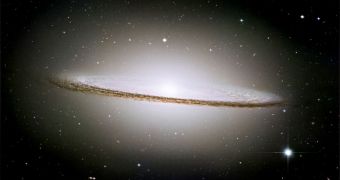A team of astronomers recently discovered the farthest black hole ever, located nearly 13 billion light-years from Earth. It was spotted after it emitted a bright burst of light, as it sucked up nearby gas, heating it and causing it to glow very brightly in what's known as a quasar.
Most astronomers seem to agree that the only thing that could spark the bright flash is the birth of a black hole, but little is known about what converts the newborn black hole's energy into the radiation that astronomers detect.
Quasars are extremely bright and distant astronomical objects thought to be the active nuclei of young galaxies. Most galaxies, including the Milky Way, are thought to have supermassive black holes at their centers, but not all such black holes are quasars.
This one is located in the constellation Pisces and scientists measured the distance to it using the amount of redshift in the lines of the quasar's spectrum, or prism of light. A redshift occurs when the electromagnetic radiation, usually visible light that is emitted from or reflected off of an object is shifted towards the red end of the electromagnetic spectrum.
It's used to determine the movement of distant astronomical objects, as the higher the redshift, the further away the object is. "As soon as I saw the spectrum with its booming emission line, I knew this one was a long way away," said team member Chris Willott of the University of Ottawa.
Bright light coming from the quasar illuminates hydrogen in front of it, which makes it possible for astronomers to see an image of the quasar as it was 1 billion years after the Big Bang, when it formed.
"It is puzzling how such enormous black holes are found so early on in the universe ... because we believe that black holes take a long time to grow," said team member John Hutchings of the Herzberg Institute of Astrophysics.

 14 DAY TRIAL //
14 DAY TRIAL //